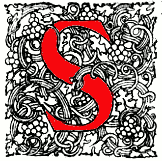IV. Some Final Thoughts on the Victorian Ghost Story

upernatural tales of the nineteenth century might thus be described as a combination of entertaining thrills and serious purposes; though designed for leisure reading, they articulate a serious and sometimes profound critique of the workings of the mind, the condition of womanhood in Victorian society and the machinations of capital, property, propriety and empire. Seemingly bound by what sometimes seem hackneyed conventions, the writers turn those traditions to unconventional and transgressive ends, embedding their messages in fantasies that purport to be ‘real’ but always remain ambiguously poised between possibilities – sometimes suggesting that the supernatural exists and sometimes suggesting it is just a product of psychological (or even) physical disorders.
Victorian ghost stories therein exemplify the many contradictions of Victorian culture. Contained within the mass medium of magazine publication, they closely reflect the constant oscillation between the belief in science and the need to have evidence of the spiritual, the emphasis on rigid social structures and the desire to pick them apart, the fascination with rationality and the fearful contemplation of the mind’s possibilities. Nothing is more compelling than a pleasurable scare, but more interesting is the way in which the stories provided a glass – albeit a subtle and distorted one – that enabled the original audiences to find a coded reflection of their life and times.
Related Material
- Introduction: The Haunted Text
- I. Doubts and Affirmations: the Purposes of the Victorian Ghost Story
- II. The Psychological Ghost
- III. The Political Ghost and Women's Issues
- Bibliography (primary and secondary sources)
Created 2 June 2021